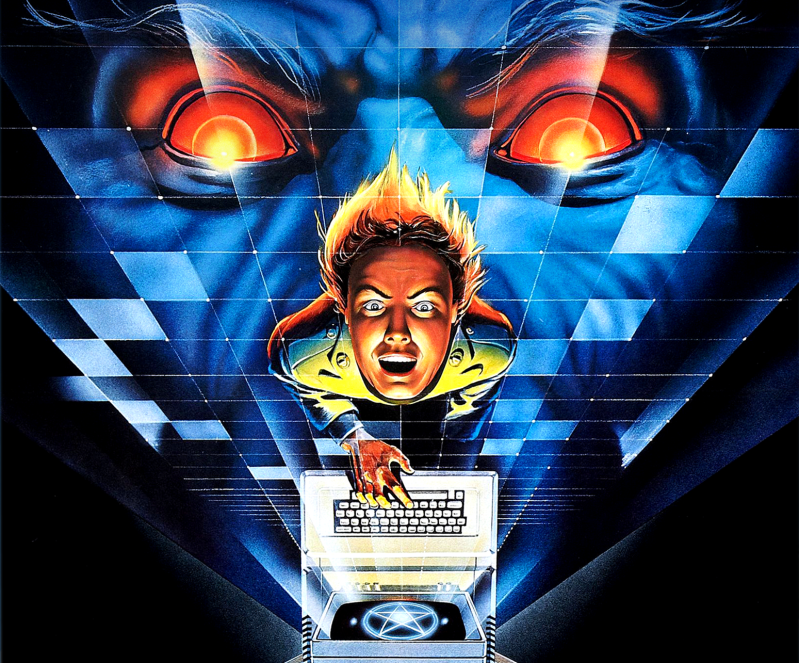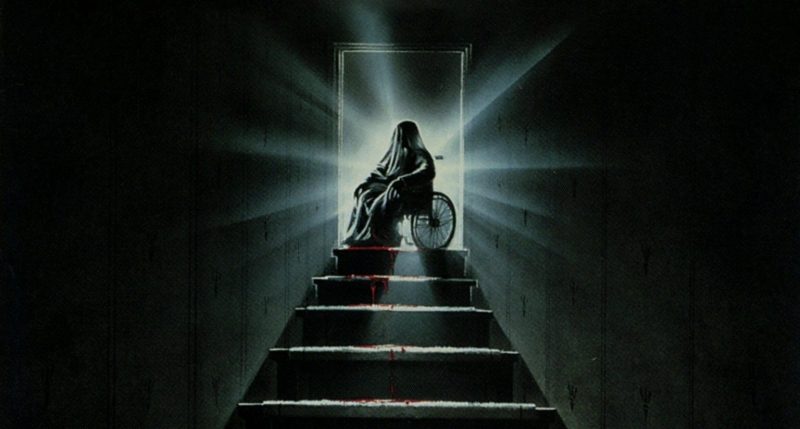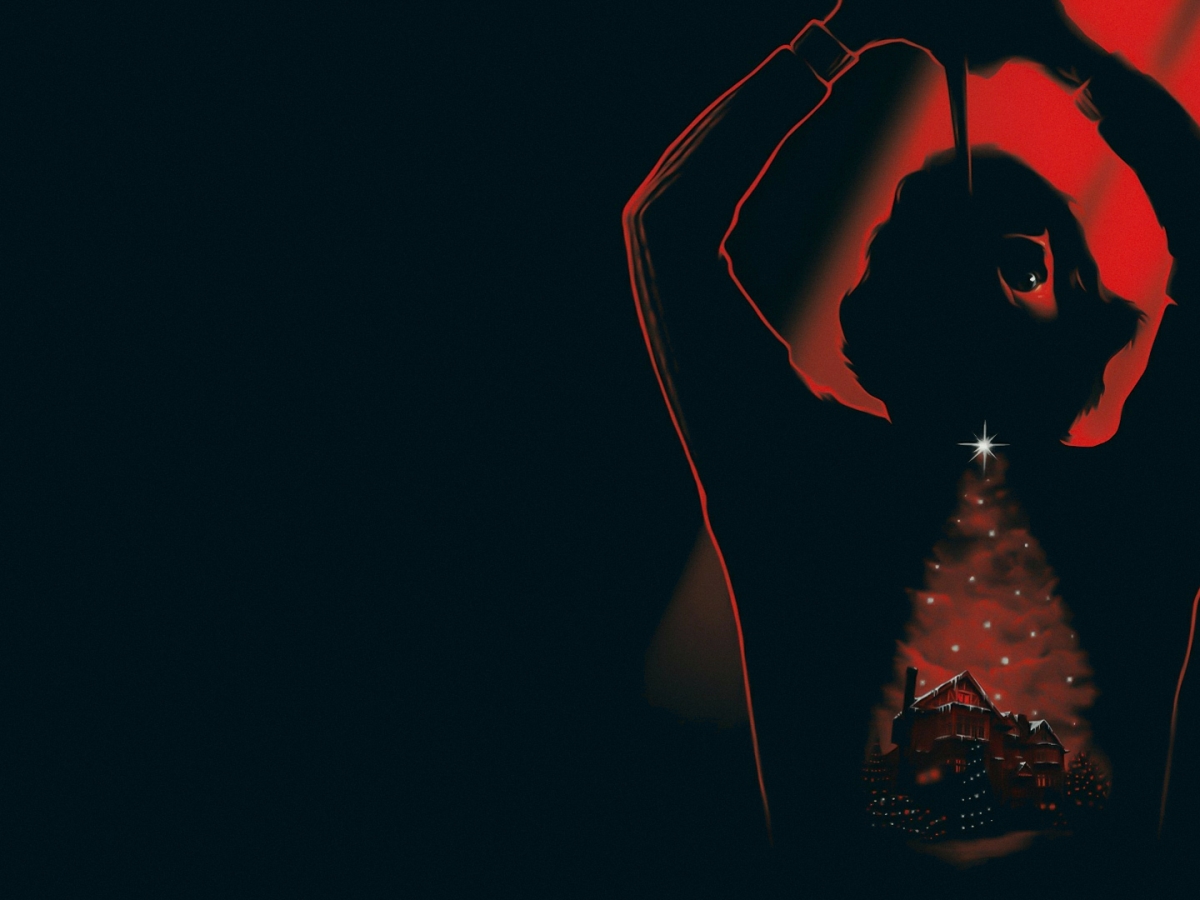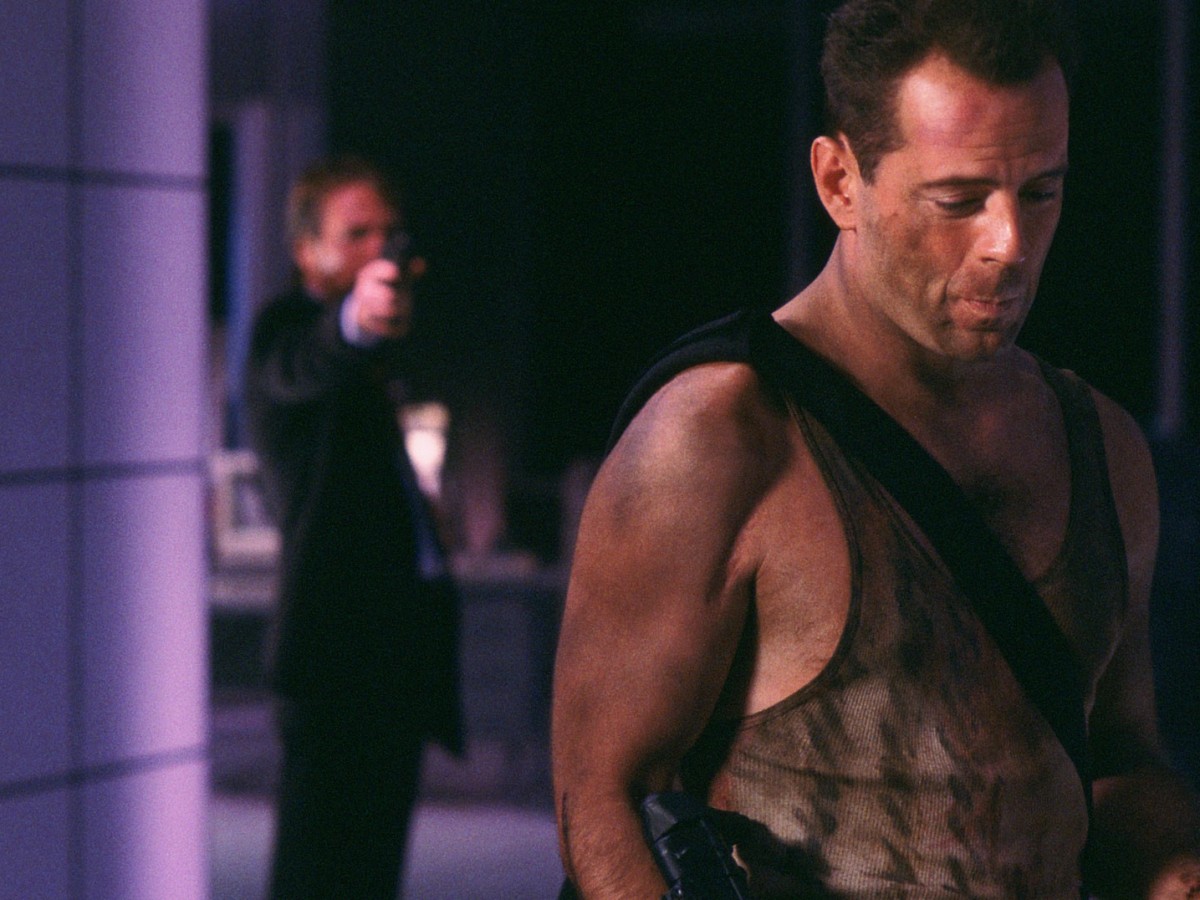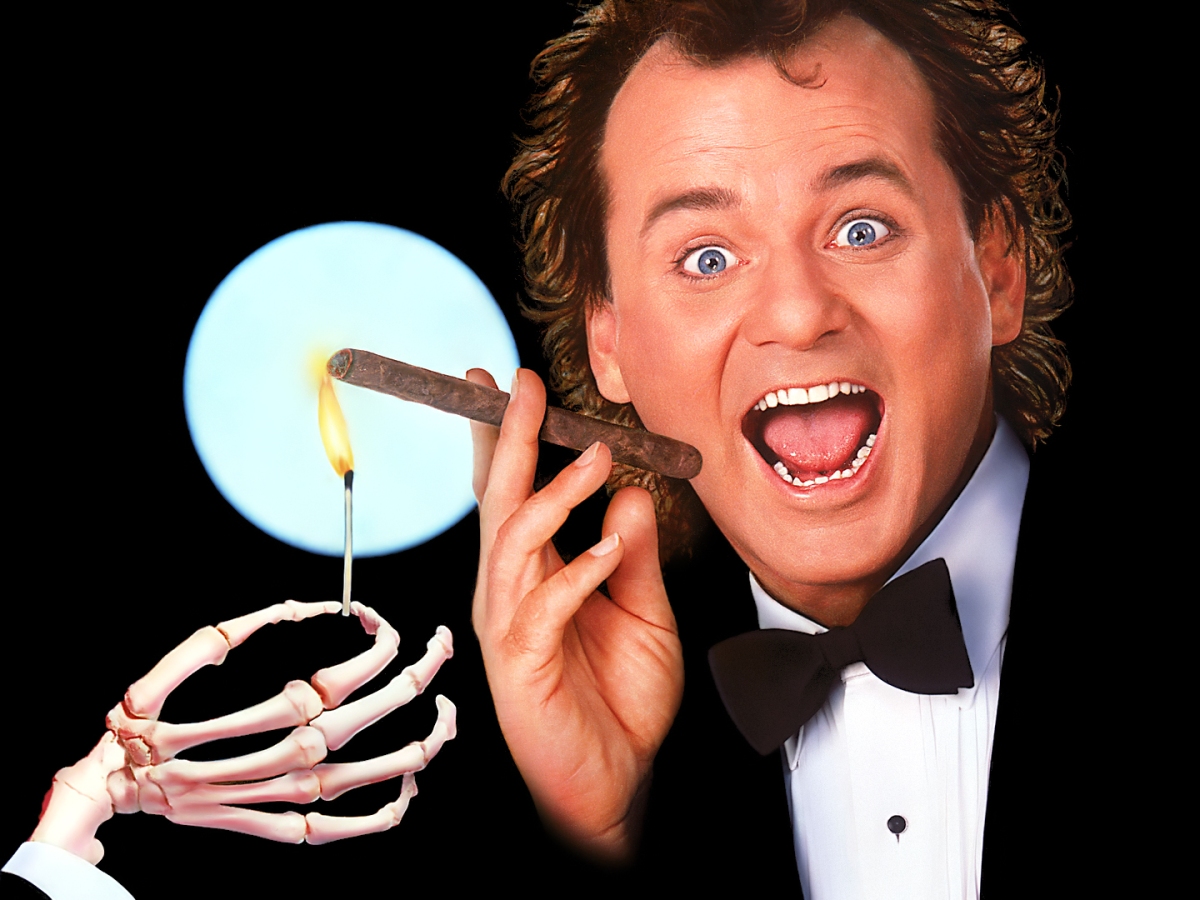
Banished to commercial purgatory for decades, Michael Powell’s lurid proto-slasher, released two months prior to Hitchcock’s hugely influential Psycho, is now regarded as one of horror’s most daring innovators
Cinema has produced no shortage of controversial films throughout the years, particularly in the horror genre, the very purpose of which is to push boundaries and prod the tender recesses of our throbbing immoralities, but few movies offended critics quite like Peeping Tom, a slasher progenitor that was years ahead of its time both stylistically and conceptually. Fewer still were so detrimental to the careers of those responsible, but British filmmaker Michael Powell, an already 32-year veteran who boasts five movies on the British Film Institute Top 100 list, was publicly castigated by critics, the movie banished to the barely whispered annals of folklore by antsy distributors who quickly cancelled distribution and in Powell’s own words, “sold the negative as soon as they could to an obscure black-marketer of films, who tried to forget it, and forgotten it was, along with its director, for 20 years.” Back in 1960, Powell was the filmic equivalent of Marquis de Sade.
That Peeping Tom ended Powell’s career on British shores is something of a common myth. Technically, the filmmaker was responsible for two more theatrical releases in the UK, but 1961’s The Queen’s Guard, having received similarly unfavourable reviews, disappeared almost immediately, his next effort, 1972’s The Boy who Turned Yellow, a low-budget affair made for the Children’s Film Foundation that received very limited exposure. Powell instead found work on international shores, his once-prolific career working alongside fellow screenwriter, director and producer Emeric Pressburger unceremoniously halted. A former colleague and friend of the great Alfred Hitchcock, Powell claimed to have made many enemies over the years, industry players who used Peeping Tom as an excuse to finally put him out to pasture. “I had a lot of enemies in the higher echelons of the British film industry and they used the initial reaction to Peeping Tom against me,” Powell would recall. “A lot of people thought I was a pain in the neck, always wanting to do something new, sometimes proving them wrong—occasionally proving them right! But for a long time Peeping Tom made it impossible for me to get any film produced in England.”
With Peeping Tom Powell certainly gave the industry something new, introducing horror to the realms of meta long before Wes Craven blessed audiences with the overt wonders of the hyper-referential Scream. Having been released 36 years earlier, it’s much more subtle, brandishing a sense of mocking wit more in the Hitchcock vein, but the film deconstructs cinema in much the same way, implicating not only the audience but the filmmaker. Antagonist Mark Lewis (Carl Boehm) assumes the role of killer in the realms of fantasy, but does so in a way that shifts the viewer’s gaze, placing us directly in the perpetrator’s shoes. Audiences and even critics who were used to participating from the anonymous shadows of some dimly-lit theatre were suddenly thrust into the moral spotlight, and their natural instinct was to turn on the film rather than accept their own role in it. Filmmaking as an outlet for voyeurism was no longer an unspoken secret.

Powell doesn’t waste any time laying bare his meta intentions. The film’s bravura opening sequence, ingeniously shot through the POV crosshairs of a viewfinder, not only puts the viewer at the scene of the crime, it hands us the murder weapon, and there’s no escape as we close in for the kill in the dingy alleyways of a luridly lit London, an environment that glows with the synthetic squalor of a painstaking Dickensian set and the barely hidden vice inherent. That weapon is an extension of the camera, a concealed blade masquerading as the leg of a tripod, the act an extension of the filmmaking process itself. The audience, consuming every excruciating bead of terror, are forced to commit the unthinkable. Not only are we witness to the murder, we’re accessories to the fact, and Powell isn’t about to let us go unpunished.
Imagine… someone coming towards you… who wants to kill you… regardless of the consequences.
Mark Lewis
It’s a startlingly bold, unapologetic introduction to a truly unique concept, but Powell isn’t finished with us yet. When we cut to the next scene our transgressions are on display for all to see. There’s no mystery to be found, no connecting the dots from the comfort of our seats. The killer, and the audience by proxy, have already been exposed. From the vulgar whir of a projector’s mechanics we’re introduced to the murder’s culprit, a production crew member and aspiring filmmaker who works part-time as an under-the-counter soft porn photographer. Mark, who’s determined to document his misdeeds in what can only be described as an act of raw desire, analyses the previous night’s footage in reality-abstracting black and white. Crucially, he consumes his victim’s sheer display of terror, an emotion that he thrives on inspiring, with his back to the movie’s audience. In that moment he is the audience. We are essentially looking at ourselves.
True to his words, and despite the film being rejected like an irredeemable town pervert, Powell would also prove many of his detractors wrong, Peeping Tom now regarded as one of the most daring and influential horror films of all time. If it wasn’t for high-profile Powell appreciator Martin Scorsese, who would pay for a print to be brought to the 1979 New York Film Festival, leading to a subsequent stateside re-release, Peeping Tom would probably have remained, as one critic had openly wished, ‘down the nearest sewer’. “Peeping Tom is a frightening experience. It’s also a thrilling one. Because it gets close to the heart of the impulse deep within filmmaking,” Scorsese would say. “To make films, to make images, and stories from those images, other imagined worlds, it’s exciting, it’s intoxicating, which means that can get a grip on you. And unless you’re very careful it won’t let you go… Powell dared what no one else had dared before him, to show us how close moviemaking can come to madness.”

Mark is certainly representative of that notion, handling his equipment with the tenuous, exhilarated touch of a taboo love. Not only is the process of filmmaking and everything it represents his first love, it’s his only love, a passion that overwhelms all sense of normalcy and traditional emotional involvement. ‘Scoptophilia’, the aesthetic pleasure drawn from observing an object or person, consumes Mark absolutely, as does the process of capturing that moment through the camera’s immortal gaze, creating the Jekyll to his barely contained Hyde. When neighbour and potential love interest Helen (Anna Massey) speaks with Mark in the more conventional parts of his home, the shy, reclusive, almost invisible man is distracted enough to temporarily open up, but once he retreats to the long-buried shadows and quasi-licentious lights of his home studio, he becomes a different creature entirely, hugging the darkness like a slippery golem with simmering, combustible appetites. When Helen approaches him for assistance with her soon-to-be-published novel, suggesting that photography can reveal truths that can’t be found in illustrations, his mask of sanity almost slips through pure, unfiltered obsession. When an investigating officer pushes for an alibi, asking Mark “Was there anyone with you?” he replies, “No, sir, just my camera,” succumbing to the machine’s unbreakable spell midsentence.
Away from the camera, Mark’s impulse to observe hardly wavers. Wherever people can be framed his face appears, the compulsion to document swallowing him whole. Though shrinking from his neighbours, confining himself to solitude amid late-night parties, he thinks nothing of peering through windows in plain sight, so used to the role of spectator that he fails to recognise the disbelief on the faces of those staring back, or at least how it relates to his position in reality. When he finally musters the lucidity to take Helen out on a date, he stops to observe two lovers caught in a passionate embrace, the urge to reach for his camera and document the act eerily palpable. How Helen, watching it all unfold in plain sight, fails to identify his darker side, is indicative of the character’s queer elusiveness and chameleon-like ability to fall in and out of madness.
One of Peeping Tom‘s most startling scenes, both for its meta flourishes and shifting intensity, takes place on a studio lot during a clandestine meeting with actress Vivian (Moira Shearer). Vivian is a gregarious, featherlight soul, utterly secure in the presence of a person who she feels absolutely familiar with, but once she finds herself in Mark’s crosshairs, a diabolical transformation takes place, one delightfully foreshadowed by a studio sign that reads ‘The Walls Are Closing In’, a statement that applies to both subjects. Suddenly Mark is all business, determined to inspire that moment of intense fear that fuels him entirely. In his pursuit of that moment, Mark begins to direct Vivian, motivating her to become his latest victim, acting out a scene that in a murderous flash will fall inevitably, hopelessly into the realms of reality. Later, when Mark films the discovery of Vivian’s body, an actress who had struggled to faint on command pricelessly hits the ground like a corpse deep into rigor mortis. It’s an intense, fascinating, darkly humorous scene that, like much of the movie’s content, was lost on critics in what, thanks to a quartet of movies released in 1960, proved a landmark year for horror cinema.

Peeping Tom, Hitchcock’s Psycho, Mario Bava’s Black Sunday and Georges Franju’s Eyes Without a Face would all break unspoken rules that left the genre lurching through the shadows of our awoken nightmares. In terms of pushing boundaries, of smashing convention and leaving behind the fantastical monsters of yore, what followed was a generational shift in what audiences would be subjected to both visually and thematically. The genre has always reflected societal fears, the end of McCarthyism triggering the death of 50s ‘Red Scare’ horror, an era of radioactive spiders, gelatinous blobs and parasitic body snatchers superseded by concepts that were much more relatable. After a decade of Cold War indulgence, of political commentaries infused with suspicion and the palpable distrust of ‘alien’ ideologies, cinema would veer towards the psychological, violence and sexuality coming to the fore as European horror took centre stage.
Franju’s Eyes Without a Face, the story of a plastic surgeon determined to perform a face transplant on his disfigured daughter, may seem tame by today’s standards, its melancholic tone offset by only a few startling moments, but the groundbreakingly visceral heterografting scene was enough to leave several viewers in need of medical attention at the Edinburgh Film Festival having passed out from shock. The daughter’s strikingly original, hauntingly featureless mask would even become the inspiration for that of slasher bogeyman Michael Myers in 1978’s similarly influential Halloween. France’s first punt at modern horror was a shocking experience to behold at the turn of the 60s. Its disquietingly intimate, devastatingly sad nature would also influence a wave of supernatural horrors such as The Innocents and The Haunting, and later Roman Polanski’s Repulsion, films that explored the emotional breakdown of female characters who replaced monsters and mad scientists as the genre’s conceptual focal point.
Don’t be a silly boy. There’s nothing to be afraid of!
A.N. Lewis
Bava’s Black Sunday aka The Mask of Satan would push the boundaries of creative violence even further, its unusually gruesome nature landing it a ban in the UK. The resultant wave of Italian Gothic horror proved hugely groundbreaking ― amazing given the fact that, due to the oppressive influences of fascism and the Vatican, the country wouldn’t produce a single horror movie until Riccardo Freda’s I Vampiri in 1957. A co-production with then-cinematographer Bava, the film was pieced together using stock footage after a dispute that saw Freda vacate the set after only ten days, but a wave of European cinema that would influence the likes of George A. Romero would emerge. Bava’s official debut would trigger an era of gore-laden Hammer indulgence as the genre embraced the shocking realms of Technicolor, the Universal monsters of Hollywood’s golden age rescued from the rubble of a studio system that was very much representative of archaic attitudes. Bava would later establish the equally innovative giallo, a genre derided in the US as a cheap Hitchcockian derivative distinguishable only by its graphic nature that would heavily influence the slasher genre, but of all those films and directors, it was Powell’s Peeping Tom that proved the most daring.

For a generation of filmmakers who cut their teeth in the slasher genre, both Bava and Hitchcock were no doubt bigger influences, but in recent years Peeping Tom, released a whole two months before Psycho, has been earmarked as the original proto-slasher, mainly due to its POV presentation, use of a signature weapon and the fact that our killer’s psychological disposition can be traced back to childhood — in this instance an abusive father who used his son as a guinea pig, testing his reactions to various stimuli for the sake of biological experiments. Unlike slashers, Peeping Tom doesn’t gloss over its origins story. It presents it in explicit detail, both in the visual acts suffered and the distressing sounds of a young Mark, now the reactive gaze in the equation. This isn’t a prank gone awry, it’s a complete documentation of how the movie’s monster became a monster. Not only did Mark suffer the same torture as his victims, his was prolonged, perpetual, and, most crucially, lacking the almost merciful act of the kill.
It was those scenes of emotional abuse, along with the film’s intrusive POV style, meta revelations and brassily-coloured moments of semi-nudity that disgusted critics. The fact that Powell cast himself as Lewis’ abusive father and his own son as a young version of the character only added to the film’s disquieting meta overtones, though Powell would later deny any intention to connect cinema with the taboo desires of filmmaker and audience, accrediting that particular insight to screenwriter Leo Marks. “I didn’t [have that intention], but I think the author did. Leo Marks initially tried to sell me a double-agent story because he’d been in the coding rooms during the war, but I just didn’t want to make that sort of film at that time. I felt I’d sized him up so I asked him about the possibility of doing something on Freud. He came back a week later with this idea for a story about a young man who kills with his camera. ‘You’re on,’ I said. ‘That’s me. Let’s make it.'” Powell also dismissed the idea that casting himself was meant as some kind of personal statement. “I can assure you it wasn’t. My son Columba’s in it too. I needed a little boy, but I really didn’t want a trained child actor. Nothing more awful. The scene also required the character’s father, so I played him. It all happened quite naturally. Organically. With Leo Marks the catalyst.
If Marks provided the thematic discourse, then Powell was certainly the filmmaker to embolden it. While Hitchcock shot Psycho in the already outmoded black and white — partly due to cost and the studio’s unwillingness to spend so heavily on a horror movie and partly because Marion Crane’s swirling blood in the film’s iconic shower sequence would have been too much — Powell embraced the expressive and symbolic power of colour in a way that left audiences not only alarmed, but woozy with exposure. Powell had proven an innovative colourist with post-war films such as 1946’s similarly metaphysical fantasy romance A Matter of Life and Death and 1948’s drama The Red Shoes, movies that, at least superficially, seemed to belong to a different filmmaker. He found the process restrictive — not the technology itself, but the impositions of the Technicolor corporation, who had a monopoly market and therefore maintained control over many aspects of a film’s production. Powell instead shot Peeping Tom using a relatively new and inferior technology known as Eastmancolor, which was both cheaper and creatively liberating. It was also visually inferior to Technicolor in a traditional sense, delivering a colour spectrum that was imperfect, almost abstract ― precisely what Peeping Tom‘s prurient tone and metaphysical extravagances required.

Peeping Tom‘s gaudy use of colour, bright and brilliant in a way that was representative of the film’s salacious overtones, must have proven deeply vulgar to watching eyes in Conservative Britain, a whole half-decade before the swinging sixties introduced a generation to go go boots, mini skirts and blatant narcotics experimentation. This was a time when sex before marriage was still frowned upon, when passion was, where permitted, kept very firmly behind closes doors. Powell’s blatant flaunting of prostitution and pornography, shot with oppressive indelicacy, was enough to scorch the prudish sensibilities of a generation who were much more prone to quaint Christian traditions. Summarised as ‘sadism, sex and the exploitation of human degradation’ by Len Mosley of The Daily Express, Nina Hibbin of The Daily Worker breathed such condemnation she seemed to reach for the Rosemary beads and crucifix, writing, ‘from its slumbering, mildly salacious beginning to its appallingly masochistic and depraved climax, [Peeping Tom] is wholly evil.’ Back in 1960, Powell’s slasher forefather was as welcome as the rise of Beelzebub on Ascension Day.
It’s strange, somewhat hypocritical, that Hitchcock’s Psycho escaped such persecution. The film had its detractors, but just as many celebrated a movie that in hindsight is much more violent and just as lascivious. The two movies are very much alike thematically and stylistically. Both feature jarringly mortal murderers with psychological problems relating to childhood. Both proved controversial thanks to their intrusive Freudian exploits and instances of violence against women. Both crossed creative boundaries in a way that shocked a generation. But while Psycho was celebrated as a technical masterpiece and nominated for four Academy Awards, including Best Director and Best Actress in a Supporting Role (Leigh), Powell’s Peeping Tom was dismissed as a lurid piece of trash that damaged all involved, Anna Massey’s career falling off the proverbial cliff edge.
The only physical act of murder we witness in Peeping Tom is Mark’s statement suicide. Psycho delivers two relatively graphic murders: Detective Arbogast’s frenzied slashing and Marion Crane’s brutal hacking-to-pieces in the privacy of a motel shower. We don’t actually see actress Janet Leigh nude, but it’s certainly implied. The same can be said of the infamous shower scene, which, thanks to George Tomasini’s deft editing, seems to show Norman’s 12-inch blade penetrating naked flesh. After Marion’s blood makes its way down the plughole, we’re also treated to a super-intense zoom that literally steals the life out of the character’s body. There was even the whole transvestite angle to consider, a whimsical gesture on Hitchcock’s part, but certainly one at odds with the conservative attitudes of the day.
Do you know what the most frightening thing in the world is? It’s fear.
Mark Lewis
Though overtly Freudian and voyeuristic in its own right, Psycho, while inviting us to spy through Norman’s sordid peephole, did lack the blatant intrusiveness of a POV killer. Hitchcock had already made masterful use of POV in 1954’s Rear Window, another movie that challenged the viewer’s motives and film’s relationship with voyeurism, though not so brazenly. While Rear Window‘s protagonist, L.B. Jefferies, felt compelled to dig deeper into the lives of others based on suspicion and the possible endangerment of a neighbour, Peeping Tom‘s antagonist is wholly self-serving, the semi-noble lens of Jeffries becoming something much more sadistic. He is the danger, as are we the audience. Did Powell’s vulgar use of colour really make all the difference? Was it the POV killer motif that sealed the deal in the eyes of critics? Or was it, as Powell himself suggested, as much to do with a personal crusade from industry players who saw a chance to persecute and took it? Whatever the reality, it reduced one of the most important films of the 21st century to a mere footnote, extricating a generation of filmmakers from its influence.

For this reason, as well as it being a bona fide masterpiece in its own right, Psycho is undoubtedly the biggest influence on the slasher movie, and horror in general, Norman Bates’ cross-dressing, knife-wielding antics forming a ubiquitous scar across the genre that continues to be torn open to this very day. John Carpenter, Wes Craven, Brian De Palma, Dario Argento, Tobe Hooper and even Bava himself owe a debt to Hitchcock’s most celebrated work, Halloween‘s mocking wit, Dressed to Kill‘s bloodthirsty transvestite and Friday the 13th‘s Norman Bates in reverse, Pamela Voorhees, all making not-so-subtle references to a movie that helped inspire the Leatherfaces and Fred Kruegers of the world, or at the very least gave them a platform. Wes Craven’s meta-infused exploration of slasher convention Scream would even kill of its biggest star in the movie’s first act, a nod to the groundbreakingly premature demise of Janet Leigh’s doomed runaway, a move that plunged convention-weaned audiences into narrative disarray. References to Peeping Tom are, comparatively speaking, few and far between.
Slipping into obscurity shortly after its US release, Peeping Tom wouldn’t resurface in the States until Scorsese’s festival screening in late ’79, the film failing to receive a wide release until 1994. Unless a teenage John Carpenter managed to see the movie during its brief initial run as a young teen, that would rule out Powell’s movie as a direct influence on Halloween, despite the astonishing similarities of Carpenter’s equally mesmerising opening salvo, a child’s mask replacing Powell’s POV crosshairs, and the same can be said for the deluge of like-for-like slashers that followed, many of them adding the POV motif and psychological aspects that Peeping Tom introduced to audiences who were deeply unprepared for such visceral filmic sentiments. Though the film has since received the critical plaudits it so richly deserves, it was a sleeping giant that still rests soundly in Psycho‘s colossal shadow, but you have to ask yourself: would Peeping Tom be as, dare I say more influential, had fate conspired otherwise?
It certainly has all the credentials, more than standing the test of time when viewed today — a rarity for a horror movie that’s more than a half-century old. Incredibly, Peeping Tom was a film that I slept on for many years. I’d heard whispers, smelled the rumours. I’d even witnessed it appearing on more and more ‘best of’ horror movie lists, ranking higher with each passing year, but it always seemed to evade me. There were even times when I went out of my way to avoid it, a queer indicator of its outsider status. If you’re yet to see this movie and find yourself in a similar situation, don’t make the same mistake I did. Do everything in your power to see it. It may seem quaint in terms of violence, but it’s still an ugly little number, tapping indecently, sometimes excruciatingly, into the darker recesses of the human psyche.
Director: Michael Powell
Screenplay: Leo Marks
Music: Brian Easdale
Cinematography: Otto Heller
Editing: Noreen Ackland



















